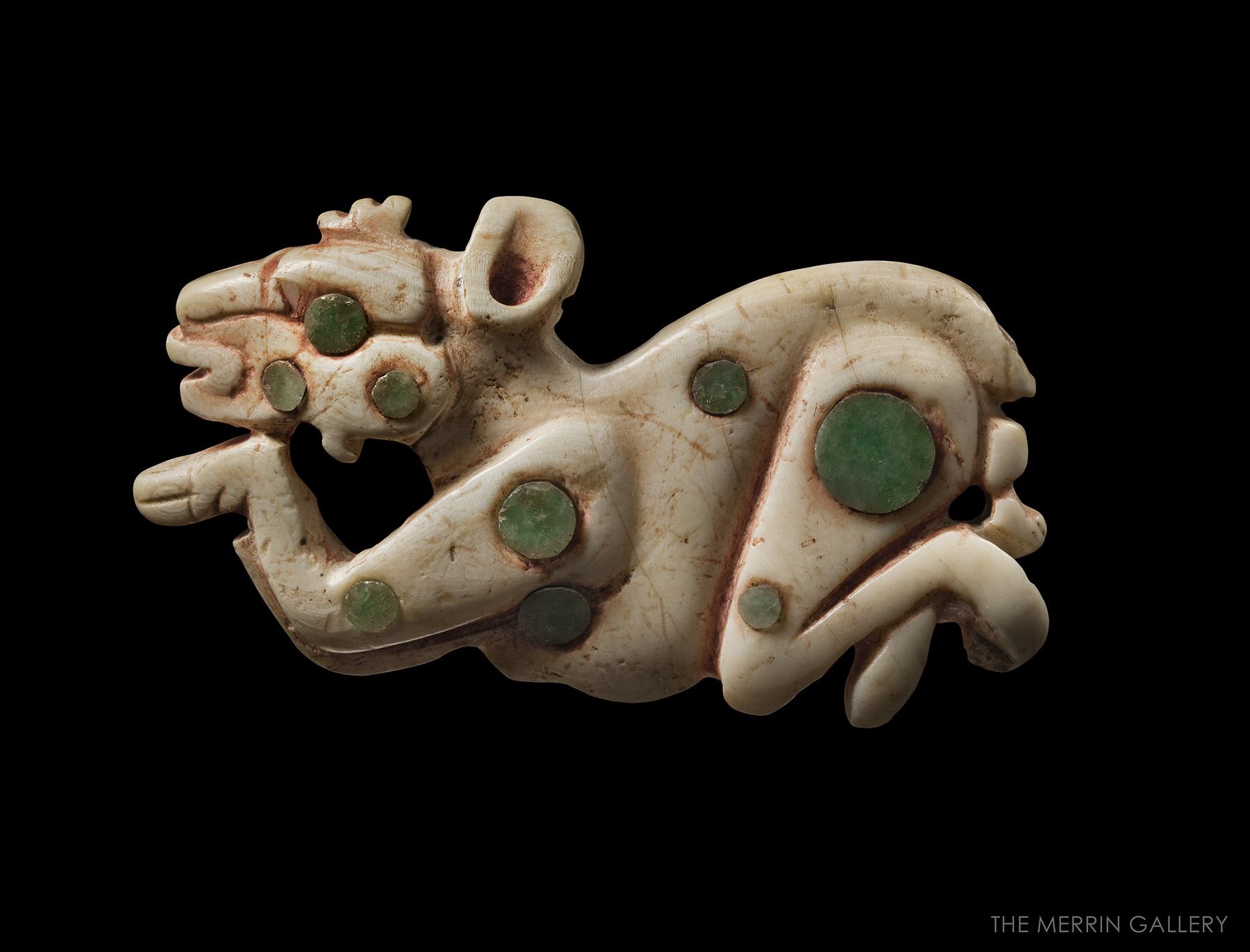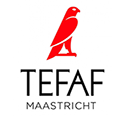Description
This Maya deer, skillfully inlaid with precious jade, was carved out of conch shell by a master artisan. The body of the animal is crouched, with its legs folded and its hooves resting under its chin. The inlaid jade may represent the powerful Maya maize god, Hun Hunahpu, or hold astrological significance. Alternatively, the animal’s large head and folded legs suggest that this is a possible representation of a fawn, indicating instead that the inlaid jade represents spots on the fawn’s coat. The openwork beneath the animal’s chin demonstrates confidence of the carver in his skill, the quality of his tools, and the strength of the material. This refinement is a tour de force.
Shells were brought from coastal Mexico to the interior for their beauty, durability, utility and stability. Inland, the material was scarce and thus actively sought, with premiums paid for the material in trade. Inland communities had no substitute, just as areas without jade had no equivalent. Various types of shells were carved into jewelry, musical instruments, and other utilitarian objects. Shells had the added quality of being from an unknown and enigmatic realm.
Deer imagery is common in Maya art. Two species of deer inhabit the Maya heartland: the more commonly depicted white-tailed deer and the diminutive brocket deer. The hunting of both was the chief source of protein for communities. In addition to meat, deer provided the Mayans with leather and antler. Along with jaguars, monkeys, and snakes, deer are the creatures depicted most commonly in Maya art.




